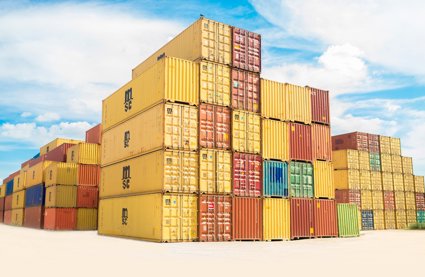
Where does my stuff come from?
This lesson looks at the sources of consumer goods from around the world and the issue of food miles
Key questions
What are the sources of consumer items and how are they spread across the globe?
What are food miles?
What are the sources of consumer items and how are they spread across the globe?
Labels on products that we buy can tell us a bit about the origins of that product, but they don't tell us the whole story. There are many questions that can be asked: Where was the product made? Who made it? What were the working conditions like for this person? Where did the different components come from? Who owns the company that made the product? Where do they make/spend their money? What are the environmental implications of the manufacturing/packaging/transporting of the product? And so on.
The American writer Thomas Friedman found that the components of his Dell laptop originated from a possible forty different factories in sixteen different countries. So it's not just the final product that needs to be investigated, but all of the component parts as well.
In their Teaching Geography article "Made in...? Appreciating the everyday geographies of connected lives", Cook et al. (2007) highlight the opportunities for studying geography that arise from consumption. They suggest that globalization, uneven development, interdependence, scale and connection, proximity and distance, relational thinking, identity, responsibility and futures can all be explored through researching the origins of the items that we buy.
In the study of consumption, people can be producers or consumers, or both. A producer is a worker who makes goods and services for other people to use and enjoy. This work can be in agriculture (growing food), manufacturing (making and assembling products such as pens, light bulbs or TVs) or services (providing a service such as legal advice). The service sector also includes creative arts such as music and film making. A consumer is someone who purchases and enjoys the use of commodities (items including manufactured goods and food). Definitions of consumer can be widened to also include the purchase and/or enjoyment of music, film and TV, art, leisure, tourism and professional services.
What are food miles?
Food miles are measures of how far food has travelled to reach a consumer. Some food is produced locally and may only travel a few miles. However, most supermarkets buy food from far away places, such as asparagus from South America, which travels thousands of miles to the UK. When it comes to processed food and eating out, we have to take into account all of the separate ingredients of the product, all of which may have come from different places.
Measures of the impacts of consumption are not restricted to food, but include all of the goods and services that we use, as well as our leisure pursuits such as music and film. Manufactured goods may contain parts from many different places, and art, music and film also have different ‘ingredients' as well as national influences, for example Bollywood films and Hip Hop music. They may also have people from different countries working together to produce the film or CD. Instead of measuring food miles, here we can study a product's carbon footprint. A carbon footprint is a measure of how much carbon dioxide is used in the production of a product, for example in its manufacture or by transporting it from one place to another. Carbon dioxide is released when fuel is burned and for this reason it is better for the environment if we avoid consuming food and goods with a high carbon footprint. This is because too much carbon dioxide in the earth's atmosphere is causing the planet to slowly heat up.
Links
Starter
What is in my bag?
Look through the contents of your pockets or bag and list the different countries that the things you carry around with you originate from.
For example, your mobile phone, jumper, lunch or books.
Compare your list with the people sitting around you. Do you notice any pattern to your findings?
Study the definitions of the key words in the definitions of stuff PowerPoint or the definitions of stuff document. These are important terms for the rest of this unit.
Main Activity
What's on the menu and where did it come from?
Discuss with your class the meaning of the term 'food miles'. Does this idea apply to the other stuff that we use, for example manufactured items or music?
In groups, choose an item to study. Some examples are a laptop computer (Download the where is your PC from? document), a restaurant menu or a piece of music or film, or you can choose your own.
You are going to research the origins of the ingredients of your item and share your findings with the rest of the class as a presentation.
To get you started, have a look at the countries involved Powerpoint presentation. It gives some examples of questions we can ask about the stuff that we use. You can adapt and use this presentation if you like.
Plenary
Fiji water - Just how far does it travel to reach Britain?
This case study returns to the idea of food miles. Read the case study and answer the questions.
Some people like to avoid buying food that has been transported long distances on account of its carbon footprint.
-
Why might it be a difficult task to reduce your food miles?
-
Why might buying ready meals or eating out at restaurants make it even harder?
-
What else can you think of that makes reducing your food miles difficult?
File nameFiles
File type
Size
Download